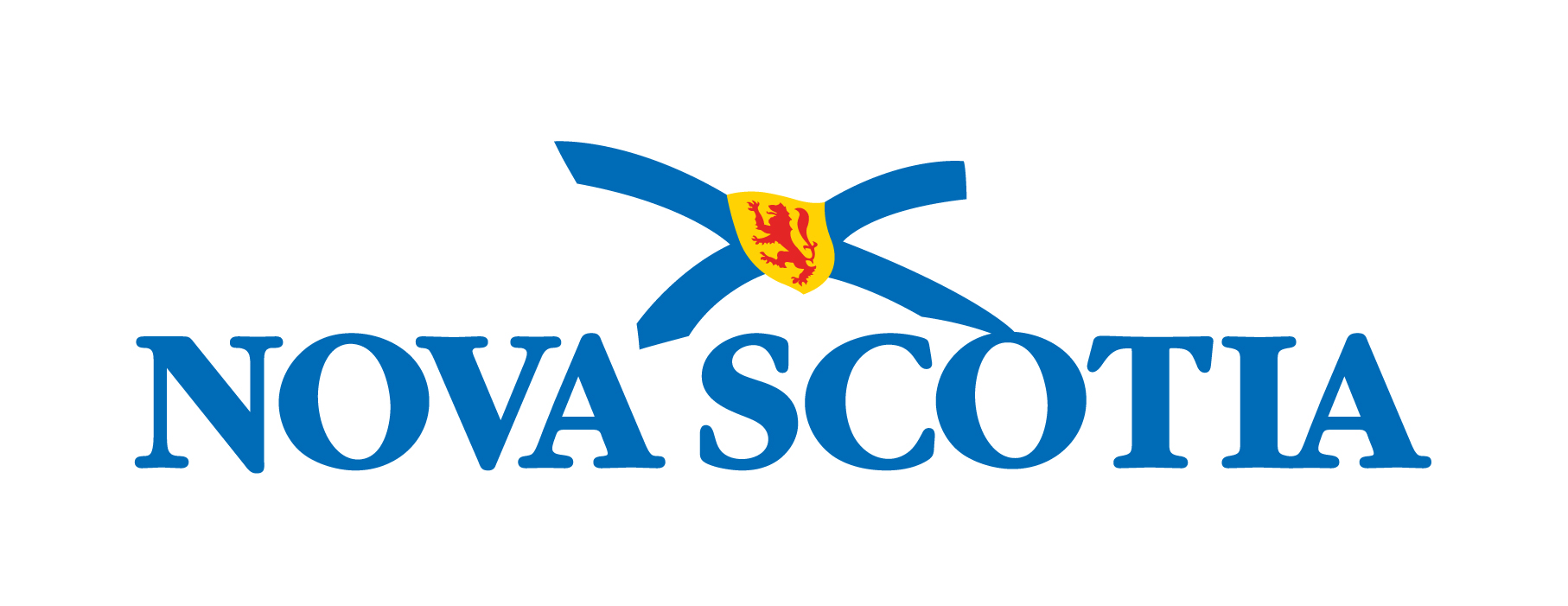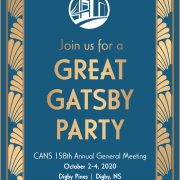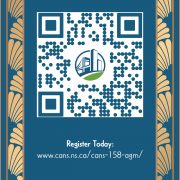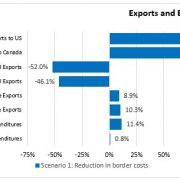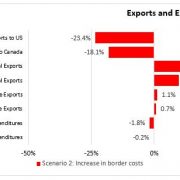ANSWER OUR SURVEY FOR TWO MORE CHANCES TO WIN A $100 GIFT CARD!
/in front, Uncategorized/by Alison ClackWe can’t get enough of your feedback, so, in our excitement, we’re extending the deadline and offering two more chances to win! The results we receive for this survey are invaluable in charting the course for our Association over the next three years, so please take a few minutes to complete our Strategic Planning Survey.
Special Pricing for CANS: CCHF Conference, October 24 & 25
/in front, Uncategorized/by Alison Clack 
CCHF Offering Special
Pricing to CANS Members
Canadian Centre for Healthcare Facilities (CCHF) is pleased to present Improving the HealthCare Build in Halifax, NS, October 24 – 25, 2019.
Get perspectives from Chief Project Officers and expert advisors from across Canada on managing complex projects and advances in clinical design integration. You will learn about two upcoming projects in Nova Scotia: QEII’s New Generation Project and Cape Breton’s Regional Municipal Redevelopment Project. There will be a Networking Reception and Tours of innovative spaces including, the Assisted Daily Living Suite and Northwood’s Long-Term Care.
Join Us to Connect – Share – Innovate!
Visit www.cchf.net to register now!
SPECIAL OFFER
CANS Members get a special discount of 20% off the conference registration with the following registration code applied:
NovaScotia2019-20P_f1k1x2i7221c2g2amn11252525
ABOUT THE EVENT
This very special eastern seaboard session aims to share both project information as well as key learning in improving care environments through the build drawing on expertise from across the country and highlighting new builds and upcoming projects.
In addition, the conference includes guided tours by clinical and facilities leads on innovative new areas that promote wellness and research to foster care from hospital to facilitating activities of daily living care and specialized equipment for leading edge brain research.
Visit www.cchf.net for more information.
ABOUT CCHF
Canadian Centre for Healthcare Facilities (CCHF) is a national, not-for-profit association. CCHF’s goal is to help the healthcare facility sector achieve higher quality, more patient-focused and lower-cost healthcare environments.
Want to sell to government? Metropolitan Regional Housing Authority & Nova Scotia Procurement offering free seminar!
/in front, Uncategorized/by Alison ClackThe Supplier Engagement Team is happy to offer a FREE seminar for all Contractors and Suppliers interested in selling to government.
Hosts: Metropolitan Regional Housing Authority & Nova Scotia Procurement
Date: Tuesday, October 29, 2019
Location: Construction Association of Nova Scotia (CANS), 134 Eileen Stubbs Ave. Unit 103, Dartmouth, NS
Time: 9:30 to 10:30
Learn how to Sell to the Metropolitan Regional Housing Authority & to the Province of Nova Scotia.
All Contractors new to bidding or those looking to learn more about the public sector and its specific tendering processes are welcome.
In this session you will learn:
- Where to find opportunities
- What type of opportunities exists in Metro Housing Authority (Supply of goods, Various services, Construction)
- About the tender opportunity notification service (TONS)
- Tender procedures and processes
Additionally, there will be an opportunity for contractors to provide feedback about their experiences with our current contracting processes and practices.
For questions related to the session listed above, please contact Beth Hartling at Beth.Hartling@novascotia.ca
For more information on Provincial Procurement please visit our website:
https://procurement.novascotia.ca/
Thank YOU for Making Our 2019 Annual General Meeting a Success!
/in front, news, Uncategorized/by Alison Clack
157th CANS ANNUAL GENERAL MEETING
HOW DID WE DO?
Attendees are encouraged to provide their feedback on CANS 157th AGM by clicking
HERE and completing the delegate feedback survey.
The Construction Association of Nova Scotia’s 2019 Annual General Meeting, held on October 4-6, 2019 at the Oak Island Resort & Conference Centre in Western Shore, NS was a big success!
Guests kicked off the weekend with two activities: a Golf Tournament held at The Chester Golf Course and an excursion to explore Mahone Bay followed by a tour of Saltbox Brewery with lunch catered by Circa 1860 Kitchen. At the golf tournament, first place went to Shane Sinclair, Dylan Smith, Stephen Gray and Brad Payne, and second place went to Vince Moseley, Doug Brophy, Jeremy Stewart and Michael Crossley.
At Saturday’s business sessions delegates heard from Canadian Construction Association’s Chair John Bockstael and Liam Daly, Manager of Public Affairs at CCA, who presented on the past year’s events and highlighted the Strategic Plan, CCA2023. Delegates also heard from CANS Committee Chairs about the progress that CANS has made over the past twelve months, and looked toward the future with a session to kick off the creation of the next CANS Strategic Plan.
Saturday’s Awards Luncheon recognized David Wilson’s contributions to the construction industry, as the recipient of the 2019 Honourary Life Membership Award. Through the designation of Honourary Life Membership, the Construction Association of Nova Scotia honours individuals who, through their deeds and actions, have significantly contributed to the betterment of the Association, the industry, and attainment of CANS’ goals and visions.
Long-term Member Awards were also presented to member companies that have held membership with the Association for 50 years or more. The following companies received their award at the AGM: Englobe Corp., Gallagher Canada Limited, South Shore Ready Mix Limited and Truefoam Limited. The Long-term Member Award honours companies who have shown their dedication, support, and commitment to the Association throughout the years and is an achievement to be proud of.
CANS also congratulated those members who have achieved 25 years of continuous membership by presenting them with a Bowman Award. G.J. Cahill & Co. (1979) Ltd., The Guarantee Company of North America and Wickwire Holm accepted their Bowman Awards at the AGM this year.
Delegates danced the night away in their Hawaiian shirts, leis and grass skirts, all ready for the Best Dressed Awards, to the musical talents of Big Fish at Saturday evening’s Hawaiian Luau!
FEEDBACK
Attendees: If you attended the 157th AGM, we would love to hear from you! Please submit feedback here: https://www.surveymonkey.com/r/AGM19Delegate
Sponsors: If you sponsored the 157th AGM, keep your eye out for the sponsor feedback survey from Natalie!
SAVE THE DATE!
CANS 158th Annual General Meeting
When: October 2-4, 2020
Where: Digby Pines Golf Resort & Spa in Digby, Nova Scotia
Theme: The Great Gatsby (Jazz, flappers, glitz, glamour, champagne and decadence)
Register NOW! Click here to register for next year’s AGM, today!
Sponsor NOW! Contact Natalie at 902.210.1720 or nbobbitt@cans.ns.ca!
2019-2020 LONG-TERM MEMBER AWARDS
CANS congratulates those members who have achieved 50 years of continuous membership by presenting them with a Long-term Award.
- Englobe Corp.
- Gallagher Canada Limited
- South Shore Ready Mix Limited
- Truefoam Limited
- V.J. Rice Concrete Ltd.
2019-2020 BOWMAN AWARDS
CANS congratulates those members who have achieved 25 years of continuous membership by presenting them with a Bowman Award.
- Able Electric 2016 Limited
- Advanced Energy Management Ltd.
- Asbestos Abatement Ltd.
- Atlantic Explosives Ltd.
- Blaine F. MacLane Excavation Ltd.
- Fundy Electric Limited
- G.J. Cahill & Co. (1979) Ltd
- John Morrison Contracting Ltd.
- R.D.L. Construction Limited
- Sansom Equipment Ltd.
- Techno Hard Surfaces Limited
- The Guarantee Company of North America
- MacPhail Construction Ltd.
- Waller Agencies Limited
- Wickwire Holm
A BIG THANKS TO ALL OF OUR AGM SPONSORS!
Level Company
Title Sponsor MARSH
App Sponsor Lindsay Construction
Diamond Sponsor Kent Building Supplies
Platinum Plus TD Banking
VIP Sponsor NSCC Foundation
Print Sponsor Halcraft Printers
Platinum AON Construction Services Group
Platinum Conrad Bros Ltd.
Platinum Nova Scotia Power
Gold AW Leil Cranes & Equipment
Gold Bird Stairs
Gold Black & McDonald
Gold BOYNECLARKE LLP
Gold Department of Labour and Advanced Education
Gold dexel
Gold Dexter Construction
Gold Iron Dog Inc.
Gold PCL Constructors Canada Inc.
Gold Pomerleau Inc.
Gold Procore Technologies
Gold SANCTON
Gold Scientext Technical Writing Ltd.
Gold Stanhope Simpson Insurance
Gold Steinhart
Gold Travelers Canada
Silver Arrow Construction Products
Silver Atlantica Contractors
Silver Battlefield Equipment Rentals
Silver BELFOR
Silver Big Bang Promotional
Silver Bird Construction
Silver CBCL Limited
Silver DORA Construction
Silver Eastern Fence
Silver Heritage Gas
Silver Kent Mobile Shelters
Silver L.E. Cruickshanks Sheet Metal Ltd.
Silver MacGregors Industrial Group
Silver Marco Group
Silver Marid Industries
Silver Meridia Recruitment Solutions
Silver Merit Nova Scotia
Silver Ocean Contractors Limited
Silver RKO Steel Ltd.
Silver The Guarantee Company of North America
Silver The Shaw Group
Silver Tirecraft
Silver Trisura Guarantee Insurance Company
Silver WCB Nova Scotia
Water Sponsor Rogers Communications Canada
Golf Hole Sponsor CANS Group Health and Wellness
Golf Hole Sponsor MacFarlands Industrial
Golf Hole Sponsor MCT Insurance a division of BrokerLink
Golf Hole Sponsor NationTek
Golf Hole Sponsor Schooley Mitchell
Golf Hole Sponsor Steinhart Distillery
157th ANNUAL GENERAL MEETING PHOTOS
Want to see what you missed out on at CANS 157th AGM? Catch up on all of our CANS Events on Flickr!
HAVE PHOTOS YOU’D LIKE TO SHARE WITH US?
Please email Alison Clack, Marketing & Communications Lead
CANS Welcomes 2019-2020 Board of Directors
/in front, news/by Alison Clack
CANS 157 Annual General Meeting was held at Oak Island Resort and Conference Centre from October 4-6, 2019. In addition to celebrating our organization’s successes over the past year, CANS welcomed its new Board of Directors and bid farewell to the board members from the previous year who’ve retired.
Please join us in welcoming CANS 2019-2020 Board of Directors:
Tim Houtsma, Marid Industries Ltd. — Chair of the Board
Tom Skinner, RKO Steel Limited — Immediate Past Chair of the Board, Treasurer
Victoria Stanhope, Stanhope Simpson Insurance Ltd. — Vice-Chair of the Board
Chad Wiesner, Lindsay Construction
Matt Sancton, Sancton Group Inc.
Rene Cox, Bird Construction Group
David Wood, Municipal Contracting Ltd.
David MacGregor, MacGregors Industrial Group
Heather Cruickshanks, L.E. Cruickshanks Sheet Metal
Charles Savoie, Black & McDonald Ltd.
Allan MacIntosh, MARCO Group
Gordon Shupe, Coastal Entrance Solutions
Gordon Gamble, Iron Dog Inc.
Jon Mullin, Grey Cardinal Management Inc.
Mark Isbister, Pomerleau Inc.
Mike Clements, Ocean Contractors Limited
Allison Coffin, Heritage Gas Limited
Elizabeth Smith, CBRE Limited
Gerard Jessome, Transporation and Infrastructure Renewal
Duncan Williams, President & CEO, Ex-Officio
Sheryl Farrington, Secretary to the Board
We would also like to recognize a retiring member, Devin Hartnell, Lindsay Construction, for his dedicated service on the board. Devin has been a member of CANS Board of Directors since 2015-2016. We appreciate the time and wisdom you contributed to the board over these years. Thank you for your service!
CCA News // Board unanimously approves new governance structure
/in front, news/by Alison Clack
Historic decision: CCA Board and members unanimously approve modern governance structure
The Canadian Construction Association (CCA) has achieved a significant milestone in keeping with our promise in the 2018 – 2023 strategic plan to modernize the association. The new structure, enabled by updated by-laws in keeping with the Canada Not-for-profit Corporations Act, will include a smaller governance board of up to 20 members, supported by two new board committees (Audit/Finance and Nominations/Governance), as well as five National Advisory Councils (Civil; General Contractors; Manufacturers, Services and Suppliers; Local Construction Associations; and Trade Contractors). The new board will strengthen the voice of our association partners in at least two ways: two chief operating officers (COOs) will be nominated to the board and an LCA council has been created with a formal link to the Board. Read more about this decision on CCA’s website.
Industry News // Statistics Canada releases methodology for estimating changes to North American trade patterns
/in front, news/by Alison Clack
Study: Estimating the effect of changing Canada/United States border costs on North American trade patterns and expenditures – detailed methodology
Statistics Canada recently completed a report on the methods used for estimating the effect of changing Canada-US border costs on North American trade. This paper is a follow-up to a previous report that provided detailed results of the study. The paper discusses in greater detail how Statistics Canada used its Surface Transportation File (STF), United States (US) domestic trade data, and a gravity trade model framework to study trade flows among 201 Canadian and United States regions for 2012. The paper also highlights a number of desirable properties of the Poisson Pseudo Maximum Likelihood (PPML) estimator, such as robustness to heteroscedasticity, the ability to hand zero-valued trade flows, and how the estimator simplifies the estimation of general equilibrium effects by satisfying adding-up constraints.
A large body of research has estimated average bilateral border costs, the combined effect of tariff and non-tariff barriers, indirectly by applying the gravity trade model framework, with border costs usually expressed as a tariff rate equivalent. Recent economic studies using this approach suggest further research is needed to accurately estimate these border costs, with concerns raised over the limited information on trade flows found in studied datasets. Geographic aggregation, to national levels or sub-national levels like provinces or states, has been found to introduce upward bias in the estimated border costs. This issue was addressed by another recent Statistics Canada study (Bemrose, Brown and Tweedle 2017), which used highly detailed trade data from the Surface Transportation File (STF).
The Gravity Model
Gravity models of trade originated with the preposition that bilateral trade flows should be increasing with the economic sizes of trading partners, and decreasing in their distance. The seminal work of Anderson and van Wincoop (2003) provided the first of many theoretical justifications for the gravity model, which showed that in addition to size and proximity, gravity models should also incorporate “multilateral resistance” terms to capture the influence of other trading partners. The gravity model for exports from location i to j (Xij) can be written as:
where Πi and Pj are the multilateral resistance terms, Yi is total output for location i, Ej is location j’s total expenditures on goods and services from all locations, tij is the bilateral trade cost, and −ε is the trade cost elasticity.
Data
The STF was built from shipping records to measure domestic trade between detailed locations within Canada and between the United States and Canada. This dataset was combined with US Commodity Flow Survey (CFS) data to produce trade flow data among 201 comparable Canadian and United States regions for 2012. The resulting dataset is one of the most geographically detailed trade datasets available for measuring the average cost of the Canada-US and provincial borders.
Finer geographic detail should provide better estimates of average shipping distances between economic regions, and make intraregional trade costs more homogeneous across geographical units. Previous studies have suggested that measurement errors in distance and large differences in intraregional trade costs can cause substantial bias in estimated border costs. Sub-State and Sub-Provincial geographies were created for this study using the CFS’s division of states into metropolitan and non-metropolitan (MA/non-MA) areas, and the aggregation of STF trade flows into Economic Regions (ERs) comparable in size to the US MA/non-MA geography.
Most research is limited to using great circle distances between arbitrary points within trading areas. These measures often mischaracterize the distance goods traded between regions actually travel. The STF and CFS allow the derivation of network distances that more accurately reflect the origins, destinations and journeys goods can be expected to take.
Estimation
The gravity model has traditionally been estimated by taking the natural log and using ordinary least squares (OLS). However, Silva and Tenreyro (2006) show that this approach leads to biased estimates in the presence of heteroskedasticity due to the retransformation problem. The authors suggest estimating the gravity equation in multiplicative form using Poisson Pseudo Maximum Likelihood (PPML) estimation. PPML is robust to heteroscedasticity and has the added benefit of being able to accommodate zero-valued observations for the dependant variable (i.e. zero-valued trade flows). Fally (2015) shows that importer and exporter fixed effects estimated by PPML will always satisfy the adding-up conditions for the multilateral resistance terms, simplifying the process of estimating full general equilibrium effects of changes to border costs.
For the econometric specification, the functional form of the multilateral resistance terms need not be identified to estimate the gravity model, since these terms can be replaced with importer and exporter fixed effects. Proxy variables are used to capture bilateral trade costs, which include distance and dummy variables that indicate if a provincial border, state border, or the Canadian-US border separates the two regions. In much of the literature, the trade cost of exporting from region i to region j is assumed to be a log-linear function of distance. This assumption is likely problematic when using a fine geographic breakdown, as trade involves both fixed and variable transportation costs. To account for possible nonlinearities in the effect of distance, a spline function is defined over various ranges of distance.
Results
The results suggest that the tariff rate equivalent for the Canada-US border is in the neighborhood of 30%, while the provincial border imposes a cost equivalent to a 10% tariff, on average. To gauge the significance of these costs, model estimates are used to evaluate the general equilibrium effects of changing Canada-US border costs through two counter factual scenarios. First, the cost of trading between Canada and the United States is assumed to be equivalent to trading across provincial borders. This amounts to reducing the Canada-US border cost to a 10% tariff equivalent. The second scenario is representative of Canada and the US withdrawling from a preferential trading agreement (i.e. NAFTA). For this case, it is assumed that the Canada-US border cost would increase to a 36% tariff equivalent.
Results suggest that reducing the cost of the Canada-US border from 30 to 10 per cent will lead to an 82.2 per cent increase in exports from Canada to the United States, a 52.0 per cent decrease in inter-provincial exports, and a 46.1 per cent decline in intra-provincial exports. In addition, expenditure on domestic and imported non-energy goods increases 11.4% in Canada.
Estimates also suggest that increasing the Canada-US border cost from 30 to 36 per cent would reduce Canadian exports to the United States by 23.4 per cent and increase trade within Canada with inter-provincial exports rising 11.3 per cent and intra-provincial trade increasing 9.8 per cent. The authors also find that the higher border cost would reduced non-energy goods expenditures by 1.8 per cent (approximately $10 billion CAD in 2012).
References
Anderson, J. E. and E. van Wincoop (2003). Gravity with Gravitas: A Solution to the Border Puzzle. American Economic Review 93(1), 170–192.
Bemrose, R. K., W. M. Brown, and J. Tweedle (2017). Going the Distance: Estimating the Effect of Provincial Borders on Trade when Geography Matters. Analytical Studies Branch Research Paper Series, no. 394. Statistics Canada Catalogue no. 11F0019M. Ottawa: Statistics Canada.
Fally, T. (2015). Structural gravity and fixed effects. Journal of International Economics 97(1), 76–85.
Silva, J. M. C. S. and S. Tenreyro (2006). The Log of Gravity. The Review of Economics and Statistics 88(4), 641–658.
CCA News // Report on infrastructure calls for greater and urgent investment in core works
/in front, news/by Alison Clack
CCA issued the following press release to highlight today’s release of the 2019 edition of the Canadian Infrastructure Report Card, which calls for urgent investment in Canada’s public infrastructure.
Report on infrastructure calls for greater and urgent investment in core works, says CCA.
OTTAWA, October 8, 2019 – Canada’s public infrastructure requires urgent attention in the coming decades in order to reverse the current state of disrepair, according to the 2019 edition of the Canadian Infrastructure Report Card (CIRC).
“Data from the report revealed that Canada’s public infrastructure is at serious risk,” said Mary Van Buren, president of the Canadian Construction Association. “It will require rehabilitation and replacement in the next few decades to ensure services provided continue to meet the needs of communities.”
The report, released by founding partners (CCA, Canadian Public Works Association, Canadian Society for Civil Engineering and the Federation for Canadian Municipalities), provides a timely update on the state of Canada’s public infrastructure across all core public infrastructure asset categories: roads and bridges; culture, recreation and sports facilities; potable water; wastewater; stormwater; public transit; and solid waste.
The Canadian Urban Transit Association, Canadian Network of Asset Managers and Association of Consulting Engineering Companies (ACEC) also participated in the 2019 edition.
Key takeaways from the report
Evidence informing the 2019 report shows that a concerning amount of municipal infrastructure is in poor or very poor condition. Infrastructure in this condition represents an immediate need for action, as the rehabilitation or replacement of these assets is required in the next five to 10 years to ensure that the services it provides continue to meet the community’s expectations.
An even larger proportion of municipal infrastructure is in fair condition. Infrastructure in this condition represents a view of things to come in the medium- to long-term. This infrastructure will continue to deteriorate over the next decade, falling into poor and very poor condition if rehabilitation or replacement actions are not taken.
CIRC partners are unanimous in calling upon all parties competing in the 2019 federal election to commit to addressing these shortfalls in their respective infrastructure platforms.
“CCA has made infrastructure a cornerstone of its #Construction4CDNs advocacy campaign,” said Van Buren. “Today’s release of the CIRC only strengthens our resolve in calling for a long-term 25-year blueprint for infrastructure spending in this country to ensure assets are routinely monitored and restored, preventing them from falling into such serious states of disrepair.”
The 2019 Canadian Infrastructure Report Card can be found online at canadianinfrastructure.ca.
Further questions or concerns?
If you have any questions or comments about the rollout of CIRC 2019, please contact CCA’s vice-president of public affairs, Rodrigue Gilbert, at rgilbert@cca-acc.com or 613-236-9455, ext. 432.
Industry News // The Guildfords Group Names William Brown President
/in front, news/by Alison ClackThe Guildfords Group Names William Brown President
Halifax, NS, Release: October 3, 2019 —
Darren S. Nantes, Chairman of the The Guildfords Group (Guildfords), is pleased to announce the appointment of William Brown as President.
William joined Guildfords in April of 2017 and has led significant change and improvement in numerous business processes throughout the organization. William has held Senior Executive positions for the past 9 years. Prior to joining Guildfords, William was formerly CFO and then President of a successful steel fabrication and environmental services business catering to the oil and gas sector with operations in Atlantic Canada and Alberta.
William has significant past experience in the areas of business development, operations management and project management having managed multi-million dollar projects.
“We are fortunate to have someone of William’s caliber and experience to lead Guildfords” said Nantes. “We need strong leadership to successfully implement our strategy and take advantage of the market opportunities ahead. ”
Brown said, “This is an exciting time for Guildfords, and I’m thrilled to be taking on the President role. A strong safety culture, employees who are empowered to act and a renewed focus on our customers will be key as we execute on our growth strategy”.
About Guildfords:
Guildfords is a multi-discipline construction company which began operating in 1906 and today has operations across Atlantic Canada employing 300+ people. Guildfords offers a wide range of services including but not limited to insulation, asbestos abatement, demolition, remediation, spray foam, coatings, fire proofing and steel cladding.
Contact Guildfords:
25 Guildford Avenue, Dartmouth NS B3B 0H5
Website: guildfordsgroup.com
Phone: 902-481-7900

